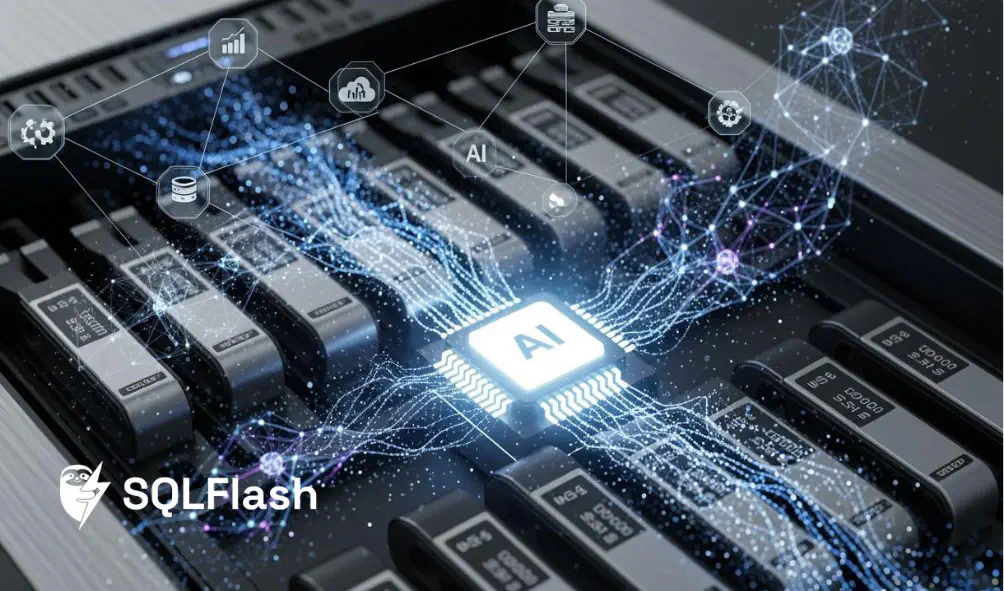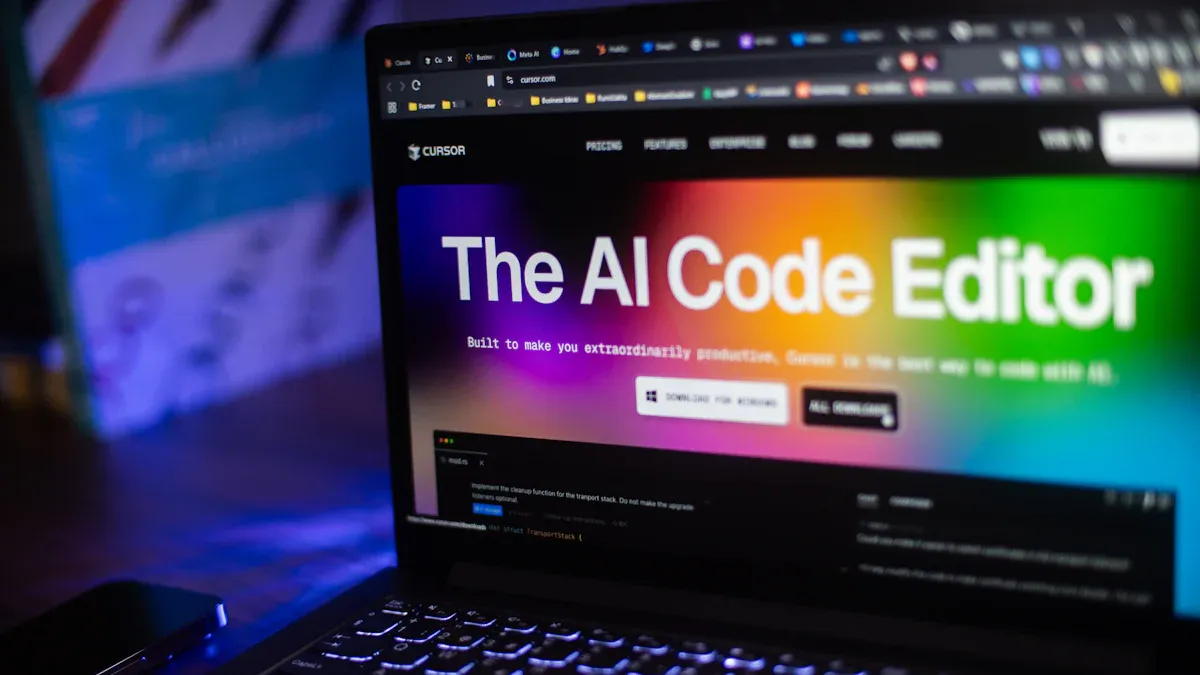Why leading databases are integrating AI to drive smarter data solutions?



You want data solutions that are smarter, faster, and safer. Picture a hospital that uses mainstream databases with AI to monitor patient care. The results show patients follow instructions 25% more. There are 30% fewer missed appointments. Patients are 75% happier. The hospital makes 20% more money. Office work drops by 40%. These changes illustrate why most mainstream databases incorporate AI now. You need to update your data systems to meet today’s needs.
You deal with new data problems every day. Data can look different. Some data is numbers in tables. Other data is things like emails or pictures. Mainstream databases use AI to help with both types. AI helps sort, label, and move data fast. It finds patterns and handles many kinds of data with less work.
AI-driven databases help you change with your business. You can change how data moves and update info right away. This means you do not need to rebuild your system when your business grows or changes.
Here is a table that shows how AI-native databases and traditional databases are different:
| Attribute | AI-native Databases | Traditional Databases |
|---|---|---|
| Data Handling | Both structured and unstructured | Primarily structured |
| Storage | Diverse systems, content management | Relational databases |
| Schema | Schema-on-read (interpreted on access) | Schema-on-write (defined upfront) |
| Analysis | AI-powered analytics | Simple SQL queries |
| Volume | ~90% of organizational data | ~10% of organizational data |
You can see that databases with AI work with almost all your data, not just a small part.
Speed and safety are important for you. AI helps databases answer questions faster. It learns from old data and gets better at finding answers. Studies show AI can make wait times much shorter. You get answers fast and can do more work.
AI makes answers come faster and more correct.
Automated tools help database administrators do less work.
Anomaly detection finds problems quickly and saves time.
AI also makes your data safer. You want your data to be safe. AI looks for strange things and warns you about risks. It can guess threats and do security checks by itself.
AI gives alerts and checks in real time.
It helps find problems and fix them automatically.
Extra security layers keep your data safe and systems working.
Tip: AI helps databases protect your business from danger and keeps your data safe all the time.
You want your business to grow and win. Databases with AI help you do better and react to changes. Companies using AI databases make more money and grow faster.
| Competitive Advantage | Description |
|---|---|
| Enhanced Revenue Opportunities | AI helps make better choices and improves customer experiences. |
| Cost Reductions | Automation saves money and stops mistakes. |
| Operational Efficiencies | AI makes work easier and lowers costs. |
| Sustainable Competitive Advantage | Special data and algorithms make it hard for others to catch up. |
You can let AI do simple jobs and let your team focus on big tasks. AI helps you find new chances and act fast. For example, businesses using AI helpers for customers get fewer routine questions and save money. You can make customers happier and work faster.
Real-time data helps you react to changes.
Easier processes save money and stop errors.
Special AI models and data give you an edge for a long time.
Mainstream databases add AI because you need to handle more data, work faster, and stay safe. You want to win in a changing world. AI helps you do that.

Image Source: pexels
Mainstream databases are changing to work with AI. You need to use many kinds of data, like pictures, words, and numbers. New systems, like data lakehouses and data fabrics, help you keep and organize all this data. Experts say big data lakes and smart pipelines help you move data to AI tools. Many groups now use GenAI and large language models. The chart below shows how companies react to these new database systems: You need databases that can hold and search vector data. These tools let you use AI models with embeddings. You can add plugins like pgvector in PostgreSQL or use automatic vector stores in MySQL HeatWave. This change helps you work with different data and link it to AI tools.
You want to talk to your data in easy ways. Generative AI lets you ask questions using simple words and get answers. You do not need to learn hard code. Mainstream databases now use natural language processing (NLP). You can make jobs like text translation and data entry automatic. Chatbots help with simple support, so your team can do harder work. You get better ideas from lots of data. The table below shows how generative AI changes how you store and search data:
| Capability | Description |
|---|---|
| Natural Language Access | Lets you use plain words to talk to databases. |
| Automated Query Generation | Helps you try ideas and run tests fast. |
| Performance Optimization | Makes your database work better by fixing searches. |
| Enhanced Data Exploration | Lets you find new ideas quickly and easily. |
You want your systems to work well without much help. Mainstream databases now use AI to do jobs like backups, watching, and tuning by themselves. Teams work 66% better. IT systems work 48% better. Over three years, you get a 436% return on investment. Self-fixing features change to fit your work and make things run better. You spend less time fixing problems and more time using your data.
Tip: Automation in databases helps you stop downtime and keeps your data safe.
You get these benefits because your database works faster, uses more kinds of data, and needs less help. These changes help you keep up with new AI needs and stay ahead in your work.

Image Source: unsplash
You want answers from your data fast. AI in mainstream databases gives you insights right away when new data comes in. You can spot trends and patterns quickly. You do not have to wait for reports. This speed helps you make good choices and react fast.
44% of IT leaders say they get five times more return from data streaming with AI.
Businesses use AI and machine learning to turn raw data into predictions and advice.
Advanced data integration brings a 354% return over three years.
Real-time data integration cuts the delay between making data and using it, which is important in fast fields like finance and online shopping.
AI can look at huge amounts of data much faster than people. You get correct answers that help you find problems and new chances.
You need to find the right information even if you do not know the exact words. Vector search and semantic queries in mainstream databases focus on meaning and context, not just keywords. These tools help you search lots of unstructured data, like emails or pictures.
Vector search and semantic queries make finding information faster and more accurate.
These methods understand synonyms, context, and even misspellings.
You can search for “car” and get results for “automobile” or “vehicle.”
The system knows the difference between “apple” the fruit and “Apple” the company.
| Feature | Semantic Search | Vector Search |
|---|---|---|
| Core Components | NLP, knowledge graphs, deep learning | Vector embeddings, k-NN/ANN algorithms |
| Performance Speed | Usually slower | Faster query response |
| Accuracy in Retrieval | Very precise | About accurate |
You want everyone on your team to use data, not just experts. AI-driven databases let people who are not tech experts ask questions and get answers. No-code and low-code platforms help you make reports and dashboards without writing code. Generative AI lets you use simple words to talk to your data.
You can ask, “What were last quarter’s top-performing products?” and get instant answers.
Text-to-SQL systems let you query databases using plain English.
More people use data tools, saving time and making faster decisions.
| Metric/Measure | Description |
|---|---|
| Number of active users | Tracks engagement with data tools across the organization |
| Time saved on report generation | Compares self-service analytics to old reporting methods |
| Volume of data-driven decisions | Measures decisions made using data insights |
| User satisfaction surveys | Checks comfort and satisfaction with data tools |
| Employee confidence | Shows how sure employees feel about data-driven choices |
You see more people using data, faster answers, and better decisions. AI in mainstream databases helps everyone work smarter.
You want to work faster and make new things. AI-driven databases help you finish boring jobs quickly. Developers using AI tools finish tasks 55.8% faster. Teams that use AI feel more productive. The table below shows these facts:
| Evidence Type | Description |
|---|---|
| Task-Dependent Benefits | Developers finish tasks 55.8% faster with AI tools. |
| Team Adoption Matters | 94% of developers on full AI teams feel productive, compared to 79% on partial AI teams. |
| Mixed Impact on Collaboration | 88% see better task throughput, but only 48% feel AI helps teamwork. |
| Limitations and Challenges | You need new skills to use AI tools well. |
| Industry Implications | Only 10% worry about losing jobs to AI, so most feel positive about AI. |
AI helps you make choices faster. Companies with strong AI programs decide 60.5% quicker. You can react to changes and test ideas with less waiting. This speed helps you stay ahead and try new things.
Tip: AI does the boring work, so you can be creative.
You want your data to be safe. AI-powered databases watch for threats all the time. These tools connect with security systems and check data from many places. AI finds real threats and ignores harmless things, so your team works better. It also spots new risks and reacts fast.
| Improvement Type | Description |
|---|---|
| Reduced False Positives | AI filters out harmless alerts, so you only see real threats. |
| Improved Threat Detection | AI finds hidden dangers and adapts to new risks. |
| Enhanced Incident Response | AI acts quickly to stop threats and limit damage. |
| Reduced Operational Costs | Automation saves money and prevents costly problems. |
| Strengthened Compliance | AI tracks rules and makes reports, so you follow laws easily. |
| Increased Visibility | AI watches your network all the time, so you see problems early. |
AI tools scan the web, even hidden sites, to find leaked data or stolen passwords. You get alerts before problems get worse.
You deal with more data every day. AI helps you manage data without extra work. It maps data fields, fixes mistakes, and shares updates right away. You can grow as your data grows, and AI keeps things running smoothly.
AI maps your data fields for you, saving time.
It checks and fixes mistakes, so your reports are correct.
You get updates in real time, so you can act fast.
AI handles new data types, making it easy to grow.
You spend less time getting data ready and more time finding answers.
AI-powered databases also clean and organize data automatically. You do not need big teams for manual work. You save money and make fewer mistakes. You can trust your data and focus on important projects.
Note: AI makes your data easier to use, so you can make better choices every day.
You can see why top databases use AI now. AI helps you get data that is smarter and faster. It also keeps your data safer. Most companies use AI because it helps them work better. AI helps people make good choices.
79% of business leaders think AI is important for success.
73% of U.S. companies use AI in some way.
Harvard Business School Professor Karim Lakhani says, “I believe the future of business will use AI.”
AI helps you do things more easily. You make better choices and save money. Experts say almost two-thirds of groups will use AI for data by 2025. If you want to stay ahead, you should use AI-driven databases.
SQLFlash is your AI-powered SQL Optimization Partner.
Based on AI models, we accurately identify SQL performance bottlenecks and optimize query performance, freeing you from the cumbersome SQL tuning process so you can fully focus on developing and implementing business logic.
Join us and experience the power of SQLFlash today!.